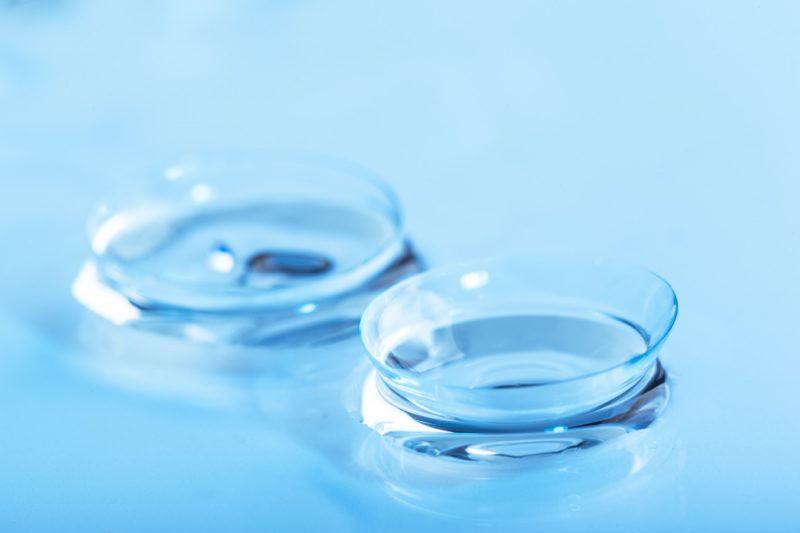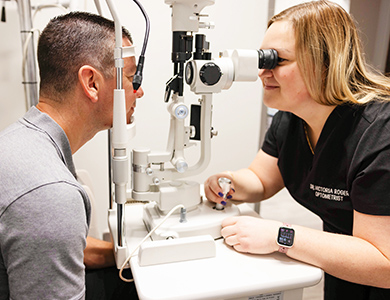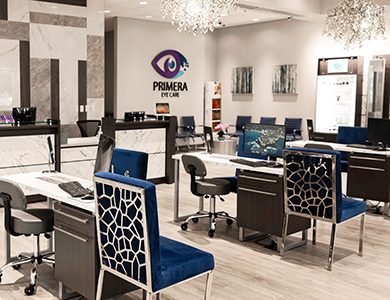
If your vision needs to be corrected, you have two choices: contacts and glasses. Some people prefer contact lenses, others prefer glasses, and some people have both and wear each in different situations. But which one is better?
There is no correct answer. There are benefits and drawbacks to both contacts and glasses. People who need vision correction should decide which they want based on what fits best into their lifestyles. To determine what eyewear will work best for you, you’ll need to know what all of your options are, as well as the pros and cons of each.
What Kinds of Contacts Are There?
Contact lenses come in both soft and hard types. Soft contacts are more flexible while hard contacts are more rigid, although both are made of a type of plastic. There are three different types of soft contact lenses:
- Disposable contact lenses
- Daily wear contact lenses
- Extended-wear contact lenses
Disposable Contact Lenses
Disposable contacts are meant to be worn just once and then thrown away afterward. They’re soft contact lenses that aren’t meant to be worn longer than a day. At the end of the day, remove the contacts and then dispose of them. They shouldn’t be worn again.
Daily Wear Contact Lenses
Contact lenses for daily wear are designed to be reworn. People with these contacts can wear them during the day, but they’ll need to be removed and cleaned at night. They should not be worn overnight. They won’t last forever, however, and will eventually need to be replaced. Discuss with your eye doctor how long you can keep rewearing these daily contacts before you need to get new ones.
Extended-Wear Contact Lenses
Extended-wear contacts are designed to be worn for longer periods of time without being removed. This means that they can be worn overnight as well as during the day. They only need to be removed for cleaning once a week.
Hard Contacts
Hard contacts aren’t as popular as soft contacts because they’re less comfortable. However, they can be easier to take care of. Plus, for people with eye conditions such as astigmatism, hard contacts may offer better vision correction.
What Kinds of Glasses Are There?
Glasses come in two types: single vision glasses and multifocal glasses. There are three different kinds of multifocal glasses:
- Progressive lenses
- Bifocals
- Trifocals
Single Vision Glasses
Single vision glasses are designed to correct just one issue: distance problems. Your prescription will depend on whether you are near-sighted or far-sighted.
Progressive Lenses
Progressive lenses are glasses that have either two or three areas for different types of vision correction, similar to bifocals and trifocals. However, there is no dividing line in between the different areas and the transition between those areas is designed to be seamless.
Bifocals
Bifocals have two different areas. The upper half of the lenses are for correcting distance vision and the bottom half is for reading.
Trifocals
Trifocals are similar to bifocals, but have three separate areas instead of just two. The top is for distance, the bottom is for reading, and an area in the middle is for middle vision.
What Are the Pros and Cons of Contact Lenses?
Contact lenses are a popular choice for vision correction. There are many benefits to wearing contacts over glasses, but there are also some disadvantages.
Pros of Contact Lenses
Many people prefer contacts over glasses because they offer more natural vision because the contacts can move with your eye as it moves. Plus, contacts don’t block your vision, fog up, or get wet in cold or rainy weather. You can also easily wear them while you play sports or swim.
Cons of Contact Lenses
The drawbacks of contacts revolve around care and maintenance. Contact lenses require a lot more care than glasses do. Depending on the type of contact lenses you have, you may have to clean them daily. Plus, you have to make sure you clean and store them correctly. Otherwise, you can run the risk of an eye infection. On top of that, it may take a while to adjust to having to wear contacts and you may need to see your eye doctor for follow-ups.
What Are the Pros and Cons of Glasses
More people actually wear glasses than do contacts. Up to 57% of people wear glasses, while only 12% wear contacts. Just like contact lenses, there are both pros and cons to wearing glasses.
Pros of Glasses
Glasses are easy to wear and take care of. You just put them on and you’re ready to go without needing to touch your eyes or try multiple times to get them in correctly. Other than the occasional cleaning with a soft cloth, glasses don’t typically need much maintenance. Plus, you don’t have to worry about regularly replacing them unless they break or your vision changes. Additionally, there are a wide variety of different frames to choose from so that your glasses can fit with your personal style.
Cons of Glasses
Glasses can distort your vision, especially peripheral vision when you get a new prescription. Plus, in cold or wet weather, glasses can fog up or get wet. They’re also not necessarily the best for playing sports, as they could get damaged. Some people don’t like how glasses look. Others don’t like them because they don’t like how they feel, since glasses sit on your ears and the bridge of your nose.
What Are the Benefits of Having Both Contacts and Glasses?
If you have a clear preference for one over the other, it may not benefit you to have both. However, if you prefer glasses, it can be beneficial to have contact lenses for playing sports. If you prefer contacts, it can be a good idea to have glasses as a backup in case you run out of contacts. Even if you wear one more than the other, it can still be a good idea to have both.
Need an Eye Exam?
Contact us to schedule an appointment.





